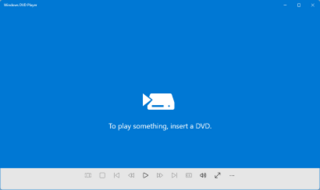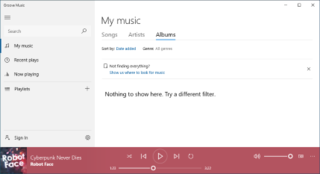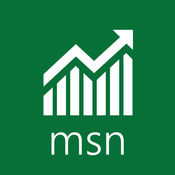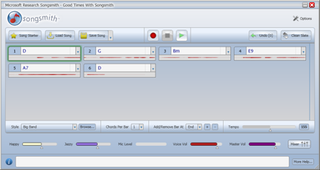 W
WActiveSync is a mobile data synchronization app developed by Microsoft, originally released in 1996. It synchronizes data with handheld devices and desktop computers. In the Windows Task Manager, the associated process is called wcescomm.exe.
 W
WMicrosoft Agent was a technology developed by Microsoft which employed animated characters, text-to-speech engines, and speech recognition software to enhance interaction with computer users. Thus it was an example of an embodied agent. It came preinstalled as part of Windows 98 through Windows Vista. It was not included with Windows 7 but can be downloaded from Microsoft. It was completely discontinued in Windows 8. Microsoft Agent functionality was exposed as an ActiveX control that can be used by web pages.
 W
WMicrosoft Amalga Unified Intelligence System was a unified health enterprise platform designed to retrieve and display patient information from many sources, including scanned documents, electrocardiograms, X-rays, MRI scans and other medical imaging procedures, lab results, dictated reports of surgery, as well as patient demographics and contact information.
 W
WMicrosoft Baseline Security Analyzer (MBSA) is a discontinued software tool which is no longer available from Microsoft that determines security state by assessing missing security updates and less-secure security settings within Microsoft Windows, Windows components such as Internet Explorer, IIS web server, and products Microsoft SQL Server, and Microsoft Office macro settings. Security updates are determined by the current version of MBSA using the Windows Update Agent present on Windows computers since Windows 2000 Service Pack 3. The less-secure settings, often called Vulnerability Assessment (VA) checks, are assessed based on a hard-coded set of registry and file checks. An example of a VA might be that permissions for one of the directories in the /www/root folder of IIS could be set at too low a level, allowing unwanted modification of files from outsiders.
 W
WBing Audio is a music recognition application created by Microsoft which is installed on Windows Phones running version 7.5 and above, including Windows Phone 8. On Windows Phone 8.1, and in regions where the Microsoft Cortana voice assistant is available, Bing Music is integrated with Cortana and the music search history is a part of Cortana's "Notebook". The service is only designed to recognize recorded songs, not live performances or humming. Xbox Music Pass subscribers can immediately add the songs to their playlists. A unique feature compared to similar services is that Bing Audio continuously listens and analyzes music while most other services can only listen for a fixed amount of time. Bing Research developed a fingerprinting algorithm to identify songs.
 W
WBing Vision is an image recognition application created by Microsoft which is installed on Windows Phones running version 7.5 and above, including Windows Phone 8. It is a part of the Bing Mobile suite of services, and on most devices can be accessed using the search button. On Windows Phone 8.1 devices where Microsoft Cortana is available, it is only available through the lenses of the Camera app. Bing Vision can scan barcodes, QR codes, Microsoft Tags, books, CDs, and DVDs. Books, CDs, and DVDs are offered through Bing Shopping.
 W
WXamarin is a Microsoft-owned San Francisco-based software company founded in May 2011 by the engineers that created Mono, Xamarin.Android and Xamarin.iOS, which are cross-platform implementations of the Common Language Infrastructure (CLI) and Common Language Specifications.
 W
WDVD Player is an app developed by Microsoft that plays DVD-Video on Microsoft Windows. DVD Player was introduced in Windows 98, and was included in Windows ME and Windows 2000 before removal from Windows XP and beyond. After Windows XP, DVD playback was built into other apps such as Windows Media Player and Windows Media Center instead. Following the discontinuation of Media Center in Windows 10 and the removal of DVD codecs from Windows 8, DVD Player was reintroduced to Windows 10 as an app available from Microsoft Store.
 W
WThe history of wikis begins in 1994, when Ward Cunningham gave the name "WikiWikiWeb" to the knowledge base, which ran on his company's website at c2.com, and the wiki software that powered it. The "wiki went public" in March 1995—the date used in anniversary celebrations of the wiki's origins. c2.com is thus the first true wiki, or a website with pages and links that can be easily edited via the browser, with a reliable version history for each page. He chose "WikiWikiWeb" as the name based on his memories of the "Wiki Wiki Shuttle" at Honolulu International Airport, and because "wiki" is the Hawaiian word for "quick".
 W
WFresh Paint is a painting app developed by Microsoft and released with the launch of Windows 8 in October 2012.
 W
WGroove Music is an audio player software application included with Windows 8, Windows 8.1, and Windows 10.
 W
WHavok is a middleware software suite developed by the Irish company Havok. Havok provides a physics engine component and related functions to video games.
 W
WMicrosoft HealthVault (2007–2019) was a web-based personal health record created by Microsoft, in October 2007, to store and maintain health and fitness information. This website was for use by both individuals and healthcare professionals, and in June 2010, it expanded its services beyond the United States to include the United Kingdom.
 W
WMicrosoft IntelliType is the brand driver for Microsoft's series of computer keyboards. Microsoft releases versions for both Windows and Mac OS X. It has been succeeded by Microsoft Mouse and Keyboard Center, which combines IntelliType with IntelliPoint.
 W
WMicrosoft Launcher is an application launcher for the Android mobile platform developed by Microsoft as a lightweight, fast, and efficient simplification of the Android user experience. Originally available as a beta in October 2015 and published to the Google Play Store on October 5, 2017, its purpose is to supply a user-centric basis for Windows and Office-themed applications via a Microsoft account.
 W
WMicrosoft Windows Malicious Software Removal Tool is a freely distributed virus removal tool developed by Microsoft for the Microsoft Windows operating system. First released on January 13, 2005, it is an on-demand anti-virus tool that scans the computer for specific widespread malware and tries to eliminate the infection. It is automatically distributed to Microsoft Windows computers via the Windows Update service but can also be separately downloaded.
 W
WMediaroom is a collection of software for operators to deliver IPTV (IPTV) subscription services, including content-protected, live, digital video recorder, video on demand, multiscreen, and applications. These services can be delivered via a range of devices inside and outside customers' homes, including wired and Wi-Fi set top boxes, PCs, tablets, smartphones and other connected devices – over both the operator's managed IP networks as well as "over the top" (OTT) or unmanaged networks.
 W
WMicrosoft Classroom was an online blended learning platform for schools that aimed to simplify grading assignments and student communication in a paperless way. It was introduced for Office 365 Education subscribers in April 2016.
 W
WMicrosoft Teams is a proprietary business communication platform developed by Microsoft, as part of the Microsoft 365 family of products. Teams primarily competes with the similar service Slack, offering workspace chat and videoconferencing, file storage, and application integration. Teams is replacing other Microsoft-operated business messaging and collaboration platforms, including Skype for Business and Microsoft Classroom.
 W
WMicrosoft Translator is a multilingual machine translation cloud service provided by Microsoft. Microsoft Translator is integrated across multiple consumer, developer, and enterprise products; including Bing, Microsoft Office, SharePoint, Microsoft Edge, Microsoft Lync, Yammer, Skype Translator, Visual Studio, Internet Explorer, and Microsoft Translator apps for Windows, Windows Phone, iPhone and Apple Watch, and Android phone and Android Wear.
 W
WMicrosoft Money is a personal finance management software program by Microsoft. It has capabilities for viewing bank account balances, creating budgets, and tracking expenses, among other features. It was designed for computers using the Microsoft Windows operating system, and versions for Windows Mobile were also available. Microsoft developed Money to compete with Quicken, another personal finance management software.
 W
WMSN Dial-up is an Internet service provider operated by Microsoft in the United States and formerly also in several other countries. Originally named The Microsoft Network, it debuted as a proprietary online service on August 24, 1995, to coincide with the release of Windows 95. In 1996 and 1997, a revised web-based version of the ISP was an early experiment at interactive multimedia content on the Internet.
 W
WMSN Dial-up is an Internet service provider operated by Microsoft in the United States and formerly also in several other countries. Originally named The Microsoft Network, it debuted as a proprietary online service on August 24, 1995, to coincide with the release of Windows 95. In 1996 and 1997, a revised web-based version of the ISP was an early experiment at interactive multimedia content on the Internet.
 W
WMicrosoft News is a news aggregator and service that features news headlines and articles chosen by editors. The app includes sections for top stories, U.S., world, politics, money, technology, entertainment, opinion, sports, and crime, along with other miscellaneous stories. It allows users to set their own favorite topics and sources, receive notifications of breaking news though alerts, filter preferred news sources, and alter font sizes to make articles easier to read.
 W
WMicrosoft Office 2000 is a release of Microsoft Office, an office suite developed and distributed by Microsoft for the Windows family of operating systems. Office 2000 was released to manufacturing on March 29, 1999, and was made available to retail on June 7, 1999. It is the successor to Office 97 and the predecessor to Office XP.
 W
WMicrosoft Office 2001 is a suite of productivity software for Mac OS 8, Mac OS 9, or the Classic environment in Mac OS X. It is the Mac equivalent of Office 2000. It was developed by Microsoft and announced on September 13, 2000 before its release on October 11, 2000.
 W
WMicrosoft Office 2003 is an office suite developed and distributed by Microsoft for its Windows operating system. Office 2003 was released to manufacturing on August 19, 2003, and was later released to retail on October 21, 2003. It was the successor to Office XP and the predecessor to Office 2007.
 W
WMicrosoft Office 2007 is a version of Microsoft Office, a family of office suites and productivity software for Windows, developed and published by Microsoft. It was released to manufacturing on November 3, 2006; it was subsequently made available to volume license customers on November 30, 2006, and later to retail on January 30, 2007, the same respective release dates of Windows Vista. It was preceded by Office 2003 and succeeded by Office 2010.
 W
WMicrosoft Office 2010 is a version of the Microsoft Office productivity suite for Microsoft Windows. Office 2010 was released to manufacturing on April 15, 2010, and was later made available for retail and online purchase on June 15, 2010. It is the successor to Office 2007 and the predecessor to Office 2013. Research and development of Office 2010 began in 2006, before the release of its predecessor.
 W
WMicrosoft Office 2013 is a version of Microsoft Office, a productivity suite for Microsoft Windows. It is the successor to Microsoft Office 2010 and the predecessor to Microsoft Office 2016. It includes extended file format support, user interface updates and support for touch among its new features. Office 2013 is suitable for IA-32 and x64 systems and requires Windows 7, Windows Server 2008 R2 or a later version of either. A version of Office 2013 comes included on Windows RT devices. Mainstream support ended on April 10, 2018. Extended support ends on April 11, 2023.
 W
WMicrosoft Office 2016 is a version of the Microsoft Office productivity suite, succeeding both Office 2013 and Office for Mac 2011 and preceding Office 2019 for both platforms. It was released on macOS on July 9, 2015, and on Microsoft Windows on September 22, 2015, for Office 365 subscribers. Mainstream support ended on October 13, 2020, and most editions have extended support up to October 14, 2025. The perpetually licensed version on macOS and Windows was released on September 22, 2015. Office 2016 requires Windows 7 SP1, Windows Server 2008 R2 SP1 or macOS X Yosemite or later. Since its successor Office 2019 only supports Windows 10 or Windows Server 2019, this is the last version of Microsoft Office compatible with Windows 7, Windows Server 2008 R2, Windows 8, Windows 8.1, Windows Server 2012, Windows Server 2012 R2, and Windows Server 2016.
 W
WMicrosoft Office 2019 is the current version of Microsoft Office for both Windows and Mac. It is the successor to Office 2016 and will be succeeded by Office 2022 in the second half of 2021. It was released to general availability for Windows 10 and for macOS on September 24, 2018. Some features that had previously been restricted to Office 365 subscribers are available in this release. Mainstream support for Office 2019 will end on October 10, 2023. Unlike other versions of Microsoft Office, Office 2019 will only get two years of extended support, which means that support for Office 2019 will end on the same day as support for Office 2016 will, on October 14, 2025.
 W
WMicrosoft Photos is Microsoft's modern image organizer, graphics editor, and video editor. It was first included in Windows 8 as a functional replacement for Windows Photo Viewer. Photos has Microsoft Sway integration and can use selected photos as a source for creating a Sway project. Users can also upload photos to OneDrive, Facebook, Twitter, Instagram and GroupMe for sharing.
 W
WPhotosynth is a discontinued app and service from Microsoft Live Labs and the University of Washington that analyzes digital photographs and generates a three-dimensional model of the photos and a point cloud of a photographed object. Pattern recognition components compare portions of images to create points, which are then compared to convert the image into a model. Users are able to view and generate their own models using a software tool available for download at the Photosynth website.
 W
WPivot is a software application from Microsoft Live Labs that allows users to interact with and search large amounts of data. It is based on Microsoft's Seadragon. It has been described as allowing users to view the web as a web rather than as isolated pages.
 W
WMicrosoft Private Folder was a product created by a Microsoft employee and available as part of their "Windows Genuine Advantage" program. It allowed users to protect private data in a password protected folder called 'My Private Folder' in the user's account.
 W
WProcess Explorer is a freeware task manager and system monitor for Microsoft Windows created by SysInternals, which has been acquired by Microsoft and re-branded as Windows Sysinternals. It provides the functionality of Windows Task Manager along with a rich set of features for collecting information about processes running on the user's system. It can be used as the first step in debugging software or system problems.
 W
WMicrosoft Security Essentials (MSE) is an antivirus software (AV) that provides protection against different types of malicious software, such as computer viruses, spyware, rootkits, and trojan horses. Prior to version 4.5, MSE ran on Windows XP, Windows Vista, and Windows 7, but not on Windows 8 and later versions, which have built-in AV components known as Windows Defender. MSE 4.5 and later versions do not run on Windows XP. The license agreement allows home users and small businesses to install and use the product free-of-charge. It replaces Windows Live OneCare, a discontinued commercial subscription-based AV service, and the free Windows Defender, which only protected users from spyware until Windows 8.
 W
WMicrosoft Research Songsmith is a musical accompaniment application for Microsoft Windows, launched in early 2009. Songsmith immediately generates a musical accompaniment after a voice is recorded. The user can adjust tempo, genre, and overall mood.
 W
WTay was an artificial intelligence chatter bot that was originally released by Microsoft Corporation via Twitter on March 23, 2016; it caused subsequent controversy when the bot began to post inflammatory and offensive tweets through its Twitter account, causing Microsoft to shut down the service only 16 hours after its launch. According to Microsoft, this was caused by trolls who "attacked" the service as the bot made replies based on its interactions with people on Twitter. It was replaced with Zo.
 W
WMicrosoft V-Chat is a freeware 3D chat program released in December 1995 by Microsoft. V-Chat is a multi-user social chat client that lets people interact online from within a 2D or 3D multimedia environment using graphical representations of themselves known as avatars. V-Chat avatars have a full range of gestures that allow users to fully express themselves online. V-Chat enables users to select from a wide variety of existing avatars, or create custom avatars using the V-Chat Avatar Wizard. Sounds, animations, and visual imagery create mood and context for these graphical social environments.
 W
WWindows Marketplace for Mobile was a service by Microsoft for its Windows Mobile platform that allowed users to browse and download applications that had been developed by third parties. The service was available for use directly on Windows Mobile 6.x devices and on personal computers. It was announced at the 2009 Mobile World Congress, and began operation on 6 October 2009, featuring an initial 246 applications. Initially it was available only for Windows Mobile 6.5, and was made available to older 6.x versions a few weeks later. On February 15, 2010 Microsoft announced its next generation mobile platform named Windows Phone; there is a separate app store, Windows Phone Store, for it; WM6.x apps are not compatible with WP7.
 W
WWindows Media Player (WMP) is a media player and media library application developed by Microsoft that is used for playing audio, video and viewing images on personal computers running the Microsoft Windows operating system, as well as on Pocket PC and Windows Mobile-based devices. Editions of Windows Media Player were also released for classic Mac OS, Mac OS X and Solaris but development of these has since been discontinued.
 W
WWindows Phone Store is a Application store, developed by Microsoft corporation for Windows Phone letting users installing various apps on their device. It intinally launched a with Windows Phone 7 in October 2010. With the rollout of Windows Phone 7.5, Microsoft unveiled the online Marketplace that offers, over the air installation of apps. In August 2012, Microsoft renamed Windows Phone Marketplace to Windows Phone Store. In 2015, Microsoft announced that Windows Phone Store would be killed out and replaced by Windows Store which would act as a unified store for all Windows-powered devices. This process was complemented by the Apps on Windows website, an interim solution before the unified Windows Store.
 W
WWindows Preinstallation Environment is a lightweight version of Windows used for the deployment of PCs, workstations, and servers, or troubleshooting an operating system while it is offline. It is intended to replace MS-DOS boot disks and can be booted via USB flash drive, PXE, iPXE, CD-ROM, or hard disk. Traditionally used by large corporations and OEMs, it is now widely available free of charge via Windows Assessment and Deployment Kit (WADK).
 W
WWindows SteadyState is a discontinued freeware tool developed by Microsoft that gives administrators enhanced options for configuring shared computers, such as hard drive protection and advanced user management. It is primarily designed for use on computers shared by many people, such as internet cafes, schools and libraries.
 W
WWindows To Go is a feature in Windows 8 Enterprise, Windows 8.1 Enterprise, Windows 10 Education and Windows 10 Enterprise versions prior to the May 2020 update, that allows the system to boot and run from certain USB mass storage devices such as USB flash drives and external hard disk drives which have been certified by Microsoft as compatible. It is a fully manageable corporate Windows environment. The development of Windows To Go was discontinued by Microsoft in 2019, and is no longer available in Windows 10 as of the May 2020 update.
 W
WWindows Virtual PC is a virtualization program for Microsoft Windows. In July 2006 Microsoft released the Windows version as a free product. In August 2006, Microsoft announced the Macintosh version would not be ported to Intel-based Macintosh computers, effectively discontinuing the product as PowerPC-based Macintosh computers would no longer be manufactured. The newest release, Windows Virtual PC, does not run on versions of Windows earlier than Windows 7, and does not officially support MS-DOS or operating systems earlier than Windows XP Professional SP3 as guests. The older versions, which support a wider range of host and guest operating systems, remain available. Starting with Windows 8, Hyper-V supersedes Windows Virtual PC.
 W
WMicrosoft Works was a productivity software suite developed by Microsoft and sold from 1987 to 2009. Its core functionality included a word processor, a spreadsheet and a database management system. Later versions had a calendar application and a dictionary while older releases included a terminal emulator. Works was available as a standalone program, and as part of a namesake home productivity suite. Because of its low cost, companies frequently pre-installed Works on their low-cost machines. Works was smaller, less expensive, and had fewer features than Microsoft Office and other major office suites available at the time.